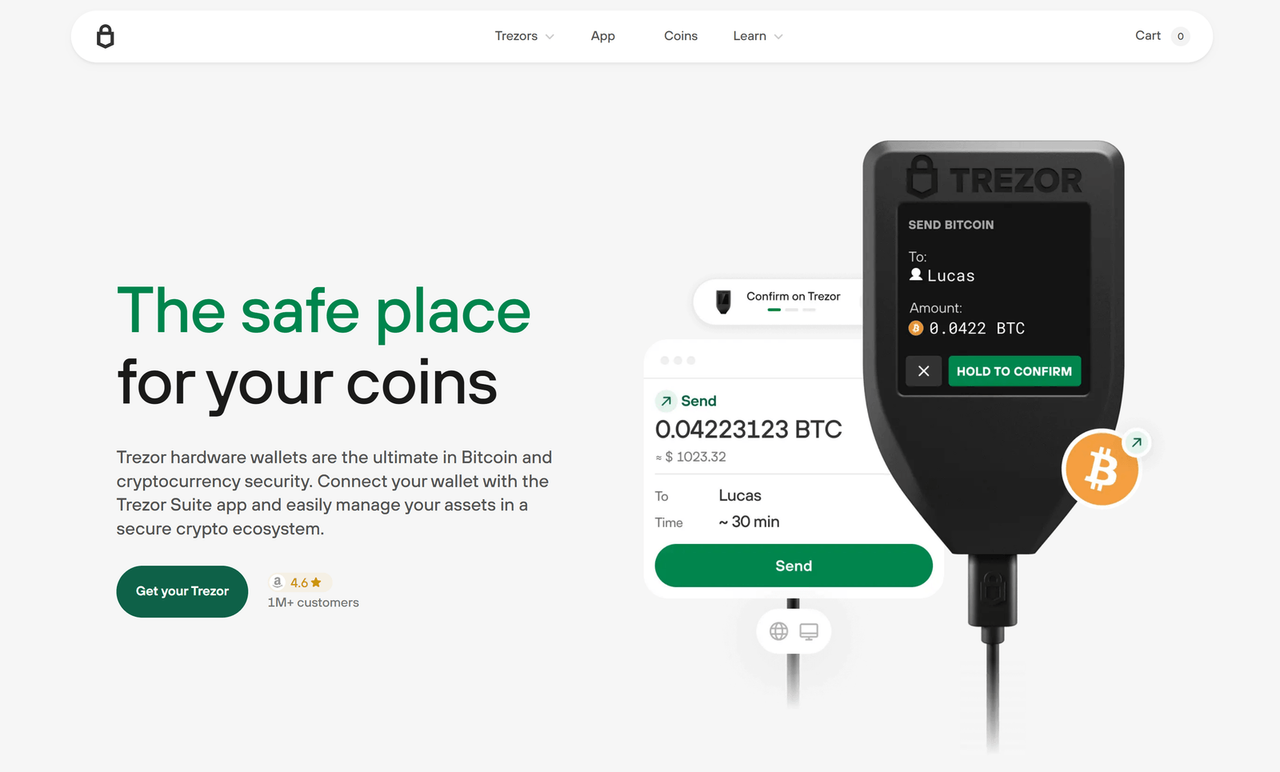
Trezor Wallet: A Complete Guide for Secure Crypto Management
The Trezor Wallet is one of the most trusted hardware wallets in the cryptocurrency industry. With Trezor Wallet, users can protect their digital assets from online threats while maintaining full control of their private keys. This guide explores everything you need to know about Trezor Wallet, from setup to advanced features and best practices.
Trezor Wallet: Why Security Matters
Trezor Wallet is designed with security at its core, ensuring private keys never leave the device. By using Trezor Wallet, cryptocurrency holders can safeguard funds against phishing, malware, and exchange hacks. This makes Trezor Wallet a must-have tool for anyone serious about protecting their digital assets.
Trezor Wallet: Step-by-Step Setup
Setting up Trezor Wallet is simple, and following the correct process ensures your funds remain secure. Here’s how to begin:
- Unbox your Trezor Wallet and connect it to your computer using the provided USB cable.
- Go to the official Trezor website and download Trezor Suite to manage your Trezor Wallet.
- Initialize the Trezor Wallet by following the prompts, including creating a strong PIN.
- Write down your recovery seed phrase in a secure location to back up your Trezor Wallet.
- Confirm setup and begin sending or receiving cryptocurrencies with Trezor Wallet.
Trezor Wallet: Supported Cryptocurrencies
The Trezor Wallet supports thousands of cryptocurrencies, including Bitcoin, Ethereum, Litecoin, and ERC-20 tokens. With Trezor Wallet, users can diversify their portfolios while managing multiple assets from one secure device. This flexibility makes Trezor Wallet ideal for both beginners and advanced crypto investors.
Trezor Wallet: Using Trezor Suite
The Trezor Wallet integrates seamlessly with Trezor Suite, a software platform that allows users to monitor balances, send transactions, and manage accounts. By pairing Trezor Wallet with Trezor Suite, users gain access to powerful tools for tracking portfolio performance while ensuring security.
Trezor Wallet: Security Features
The Trezor Wallet includes features such as PIN protection, passphrase options, encrypted communication, and offline private key storage. These protections ensure that Trezor Wallet users maintain control over their assets even in hostile online environments. Every transaction through Trezor Wallet is verified on the device itself, adding another layer of security.
Trezor Wallet: Troubleshooting and Updates
Occasionally, users may face issues such as device connection errors or outdated firmware. The Trezor Wallet can usually be restored by reconnecting the device, updating Trezor Suite, or installing the latest firmware. Keeping Trezor Wallet updated ensures compatibility and maximum protection against vulnerabilities.
Trezor Wallet: Backup and Recovery
A key part of using Trezor Wallet is safeguarding your recovery seed. This backup phrase allows you to restore your Trezor Wallet in case of device loss or damage. Properly storing the recovery seed ensures that you will always retain access to your digital assets, no matter what happens to your Trezor Wallet hardware.
Trezor Wallet: Advanced Features
Beyond basic storage, Trezor Wallet supports advanced features like multisignature accounts, integration with third-party wallets, and compatibility with decentralized finance (DeFi) platforms. This makes Trezor Wallet versatile for both casual users and professionals seeking powerful crypto management options.
Trezor Wallet: Best Practices
To get the most out of Trezor Wallet, always purchase from official sources, keep firmware updated, avoid sharing recovery phrases, and enable passphrase protection if needed. These best practices ensure that every Trezor Wallet session remains safe and effective.
Conclusion: Why Trezor Wallet is Essential
In conclusion, Trezor Wallet is one of the most secure and user-friendly solutions for managing cryptocurrency. With Trezor Wallet, investors can confidently store and transact digital assets knowing their private keys are safe. Following setup steps, security practices, and proper backup management ensures that Trezor Wallet continues to be a reliable foundation for cryptocurrency protection.